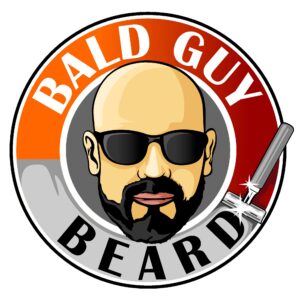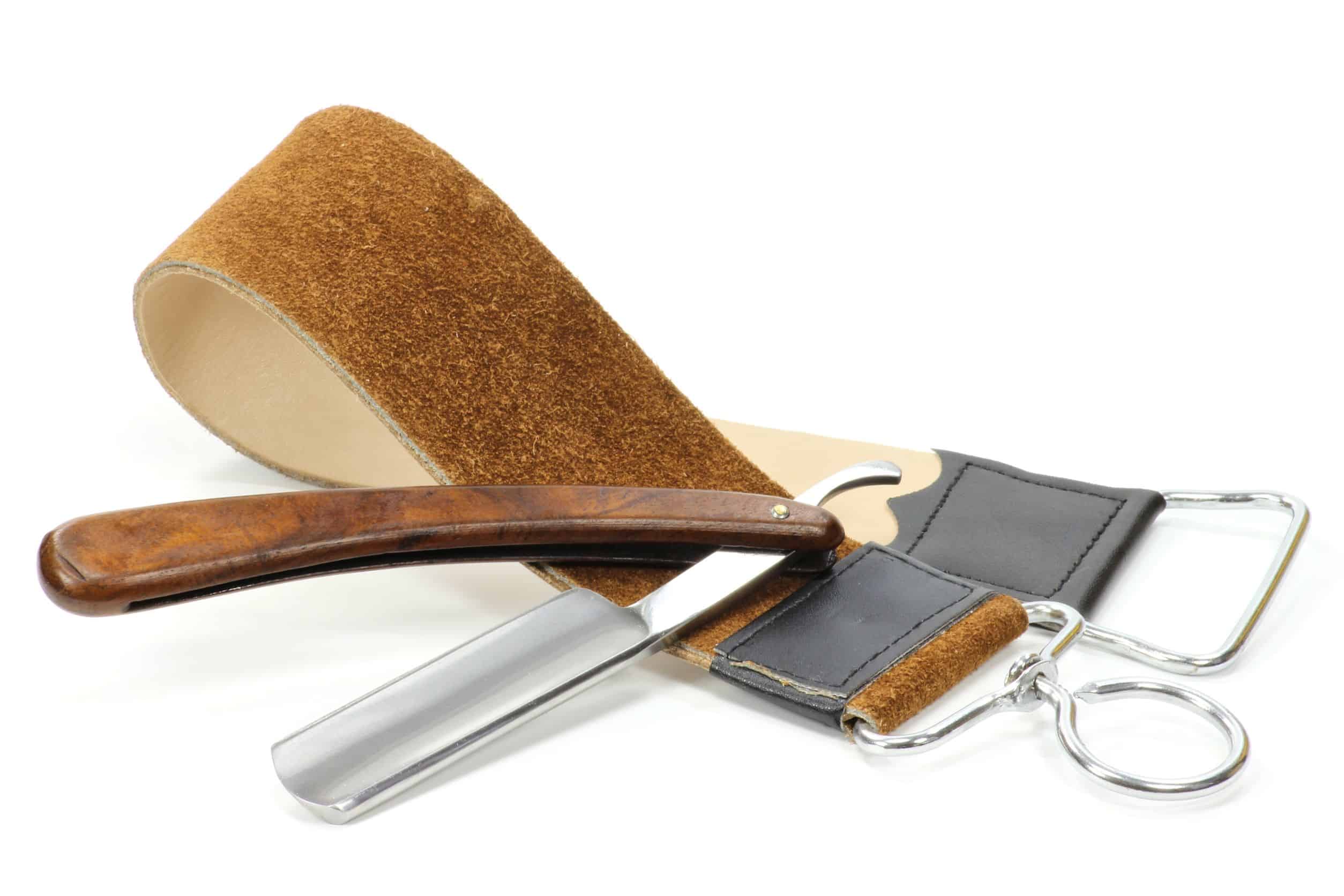Stopping is the process of refining and polishing a blade or other sharp object typically with a smooth leather belt or strap. Stopping is particularly useful for sharpening razor blades…
…but specifically a straight razor blade just as the one shown below.

So we’re not talking about sharpening your disposable razor blade here. It only works on a straight razor, knife, or other single-bladed device.
Even though our eyes can’t see it, a sharp blade – though appearing to be smooth when we look at it even up close – in fact has a series of sharp teeth that provide the cutting ability. Over time and with normal use, the teeth on the blade get bent, damaged and pulled out of line. This causes the blade to dull and lose its ability to cut properly like it did when it was new.
Sharpening, honing and refining a blade help to repair the damage and renew the blade’s ability to cut properly.
So, does stropping sharpen a razor or make it worse? If it’s done correctly, stropping does help a blade that is already sharp but could use some polishing to make it sharper. But it helps to understand the other steps involved in keeping a blade sharp.
Stropping Refines And Polishes A Razor But Does Stropping Sharpen A Razor?

Public domain: https://picryl.com/media/razor-strop
Stropping doesn’t actually sharpen a blade per se. Sharpening a blade does that. Stropping is something slightly different. Here’s a quick breakdown:
Sharpening a blade
Sharpening a blade involves grinding small bits of metal from the blade to produce a new, sharp edge. Similar to the picture above using a JET wet sharpening system to sharpen the knife.

Honing a blade
Also known as truing the blade, honing involves repairing and removing a defect in the blade such as a nick or minor bend. A blade has to be sharpened before it can then be honed. Honing helps to keep a blade sharp. You often see high end kitchen blades being honed perhaps in a movie or cooking show by rubbing them down a honing rod like the one shown above.
Refining a blade
You can use a strop (special leather belt) to sharpen and refine the blade. So while there is some sharpening of the blade, there is also refining of the blade where damaged teeth of the blade are removed and others are straightened. The combined efforts have the result of refining the blade, giving it the sharpened result from the perspective of the user. A blade is honed before it is then refined or stropped.
In the case of a straight razor, it is made sharp by the manufacturer and can be stropped over time to keep it refined and useable similar to how it was when it was new.
Can You Sharpen A Disposable Razor Blade?
Rumors abound on the Internet that you can “sharpen” a disposable razor blade by rubbing it upwards against a pair of denim jeans.
There are also products commercially available that claim they will help sharpen the blade so rather than disposing of your razor when it dulls, you “sharpen” it and make it new again, or close enough.
Whether or not these methods work is interesting and up for debate.
But new research entitled How hair deforms steel takes a fascinating look at the dulling of razor blades. Researchers basically asked the question:
How does a metal razor blade get dull when it’s cutting human hair which is 50X softer than the steel that the razor blade is made from?
What researchers found out is that the razor blade may get chipped from usage and that the chip in the blade – which is not visible to the naked eye – damages the blade and dulls it. They also determined through computer simulations that a blade tends to chip most often in three instances:
They found that the simulations predicted failure under three conditions: when the blade approached the hair at an angle, when the blade’s steel was heterogenous in composition, and when the edge of a hair strand met the blade at a weak point in its heterogenous structure.
MIT News
So even though the naked eye can’t see it, our razor blades get damaged and chipped from regular, normal use. Once these chips occur, the blades dull and need to be replaced as a result. This data may help razor blade manufacturers to make longer lasting blades in the future by taking this into account and improving the design of their blades.
Or perhaps they already knew about this fact and didn’t want to do anything about it so we have to keep replacing our blades quicker…
Conclusion
- Stropping refers to the process of refining and polishing a blade to restore its ability to cut properly.
- Stropping is done to an already sharp blade so it’s a different process and has a different purpose.
- Recent research has shown that razor blades chip from use and the damage causes them to dull as a result.
- To learn more about the research paper How hair deforms steel, click here to view this very interesting new research. It shows several video clips of a razor blade enlarged with a microscope to show how hair is cut and how it damages the blade with regular usage.
Have you ever stropped a straight razor or blade? Let us know in the comments below how it turned out!


